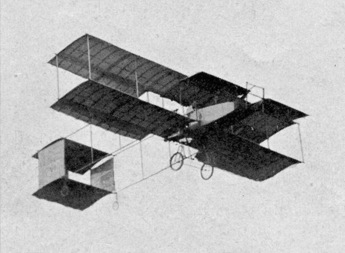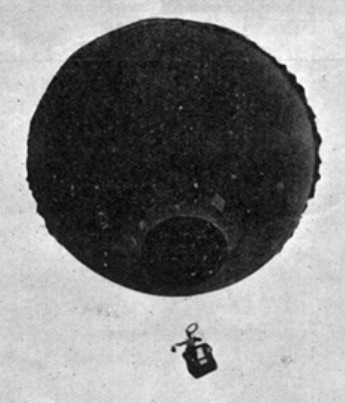Port-Aviation (Juvisy), France, 30 May - 4 July 1909






The second Port-Aviation meeting
30 May 1909
The organisers at Port-Aviation had learned some lessons, which they
put to use when La Société d'Encouragement à l'Aviation staged
the next race, already the following weekend. The advertising was more
low-key this time and the flying was not announced to start until half
past five. Those who had kept the tickets from the inauguration were
given free entrance. Spectators were only allowed on the side of the
field where they wouldn't have the sun in their eyes. There were of
course no public announcement systems in these days, but the crowd was
kept informed about the proceedings by placards carried by
automobiles.
Just as the week before, Léon Delagrange, Henry Rougier and "de
Rue" (Ferdinand Ferber) entered, all in their more or less
identical Voisins, powered by 50 hp Antoinette engines. Delagrange made
the first flight, at half past six, with a wind of 5 m/s blowing from
the northeast. He made the first turn under complete control, but at
the second marker flag he was carried towards the grandstands by a
sudden gust of wind and had to make corrections in order to avoid
hitting the fence. The time of this flight was 1:45.2. Shortly
afterwards, at 18:55, he posted the best time of the day, 1:40.6,
followed only ten minutes later by two laps in a row at an altitude of
up to 12 meters – the times were 1:50.6 and 2:18.0 respectively.
By now the wind had calmed down, and de Rue made his trial for the 500
francs prize offered to the first pilots to make officially observed
flights of 500 metres. This was easily accomplished, by a wide tour
around the entire airfield, twice crossing the river Orge. Afterwards
Rougier made an unsuccessful test flight in a straight line. He had
spent the night before fine-tuning his engine and made several flights
in the early morning, but it wouldn't cooperate anymore.
At 19:35 Delagrange flew three consecutive laps, the last one at an
altitude of 15 meters, passing above the spectator area in front of the
grandstands. Soon afterwards, at 19:45, Rougier finally managed to fly
two laps, timed at 1:53.6 and 1:59.8. At 19:50 de Rue flew two laps,
the first timed at 1:41.6. Delagrange and de Rue withdrew to the
hangars, but after finally managing to make his engine run well Rougier
made a last flight, completing one lap at 20:45, coinciding with the
first rockets of the fireworks that were launched at Juvisy.
This contest was named after its sponsor Charles Stern. The prize money, a 1,000 francs first prize and a 500 francs second prize would be given to the pilots who by June 3rd had covered one lap of a 1 kilometre course in the shortest time. Delagrange and de Rue continued racing. The pilots had complained that the two-pylon course had been too tight and difficult, so the race committee had marked up a new four-pylon one-kilometre course with equal-length 250-meter sides.
Saturday 31 May
At 17:25 de Rue made the first flight, in one of the machines of the Ligue Aérienne. He flew the first lap at six metres, taking 1:31.6, and landed before the end of the second lap. Five minutes later it was Delagrange's turn. He also flew two laps, the first in 1:23.4, the second in 1:21.6, taking the turns elegantly. Rougier also tried, but again had problems and landed almost immediately. De Rue tried a second time immediately afterwards, passing above Rougier's machine efter the take-off. He completed the lap in 1:24.0, again landing without completing a second lap. Delagrange obviously felt threatened and tried to improve his time during a second two-lap flight. Already the first lap was an improvement, taking 1:21.4, but the second was "marvellously controlled, taking the turns within centimetres of the flags" and resulted in the best time of the day, 1:18.6. At eight o'clock Rougier tried again, but with the same result as before. De Rue tried to improve, but had to land with engine problems before completing a lap. The last action of the day was another failed effort by Rougier at twenty past eight.
The new course made the actual flying distance much shorter and the turning radius bigger, which explains the much improved speeds. It was observed that since the aircraft were so closely matched the competition was decided by who could fly the neatest turns, closest to the pylons.
Monday 1 June
There were no flights on the second available day. Prix Stern could be contested not only at Port-Aviation, but also at other airfields. It was announced that Henry Farman and Hubert Latham had entered and would make their efforts at Châlons.
Tuesday 2 June
Delagrange had dismantled his plane in order to transport it to Argentan for demonstration flights starting on June 7th. De Rue waited all day for the strong northwest wind to decrease, but finally had to give up without even removing his machine from the hangar.
Wednesday 3 June
The strong winds continued, so de Rue and Latham could not make any flights. Nothing more was heard of Farman's entry, but he was also based at Châlons, so he was probably also grounded. Thus Delagrange's time from the first day stood unbeaten. De Rue offered his prize money for his second place to his mechanics.
Prix Rolland Gosselin, 13 June 1909
On Sunday June 13th Rolland Gosselin offered a prize of 1,000 francs for the best time for 5 kilometres, three laps around the six-pylon 1.666 km course. Apparently there was only one entrant, “F de Rue” in his Voisin. Despite an 8 m/s wind blowing he took off at around 19:30 and covered four laps at an altitude of around 10 metres, the best three laps taking 5:34. After completing the distance he cut the ignition, intending to glide down towards his hangar. However, while manipulating the rudder his elbow caught the ignition lever, causing the engine to start again. Before he had time to react the plane veered and hit the balustrade in front of the members' bar of the Société d'Encouragement à l'Aviation at almost full speed. “De Rue” thankfully escaped injury, but the elevators and front fuselage of the plane were destroyed and the propeller bent.
Fête Aéronautique au Profit des Sinistrés du Midi, 4 July 1909
After those more low-key meetings the Société d'Encouragement à l'Aviation organised a meeting on July 4th in order to collect money for the victims of the recent floods in southern France. There were two events. The second Prix Lagatinerie (2,500 francs) was for the fastest two laps around the 1,5 kilometre course, during which the competitors had to fly above a line of balloons, fixed at 15 metres above the ground. The Prix Mme. Edmond Archdeacon (1,000 francs) was for the longest distance flown during the day.
The weather started rainy, but improved during the day. The organizers had thought of alternative entertainment for the crowds in case the weather didn't allow flights. The program started with an automobile gymkhana event, won by M. Guyot, winner of the previous years' "Grand Prix des Voiturettes". This was followed by a race for horse-drawn Roman chariots, which despite being held during the worst downpour was considered a success.
At around 17:00 the weather finally improved and Louis Blériot made a test lap in his type XI. He then set off on a long flight, while the rainbow caused by the recent rains was still visible. He started by posting a time of 3:59.4 for the Prix Lagatinerie and then continued to fly in by now calm weather. After 50 minutes at between 20 and 40 metres height he ran out of fuel and had to land. This flight won him the Prix Mme. Edmond Archdeacon. “De Rue” made some short flights and posted a time of 3:47.0, thereby beating Blériot to the Prix Lagatinerie by twelve seconds. “De Rue's” precision turns decided a tight race between two different but well-matched planes.
The Bonnet-Labranche brothers demonstrated an automobile-drawn glider and then the program was finished by an ascension by a hot-air balloon, piloted by Alfred Boulanger, a youth of 16 years. In the dead calm of the evening it took the balloon 30 minutes to travel 600 meters across the airfield, at an altitude of up to 500 metres.
During this meeting the crowd, estimated at more than 10,000 people, certainly had had lots to look at!
